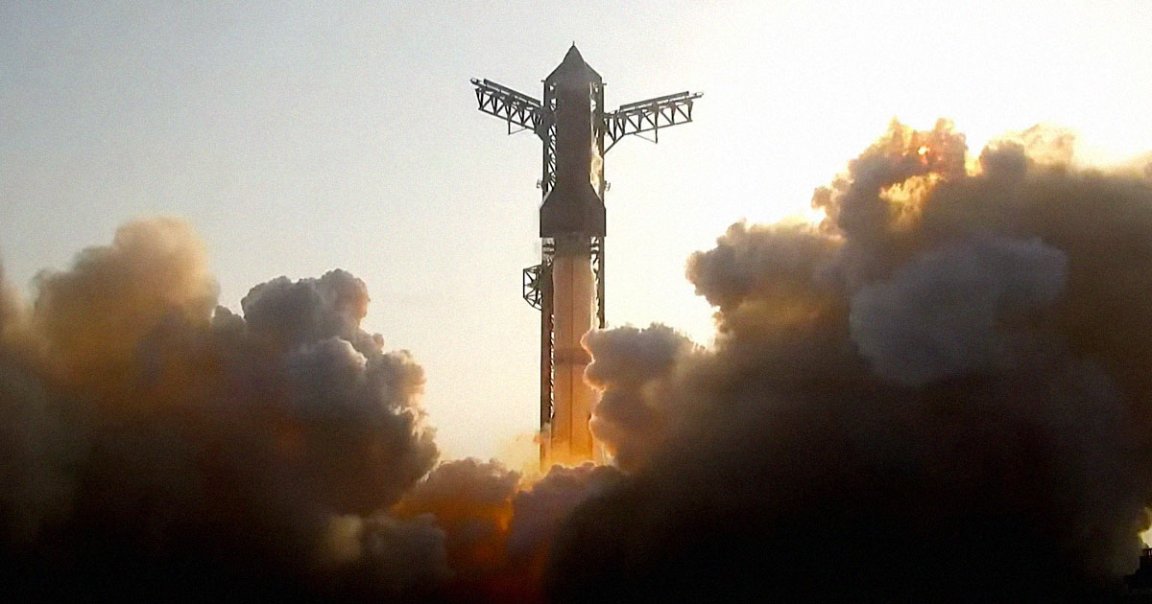
SpaceX experienced yet another failure during its ninth test launch of its Starship vehicle Tuesday evening.
The rocket spun out of control as it tumbled through space, causing it to make an uncontrolled descent in the Indian Ocean that ended in an all-too-familiar blast.
As is always the case after a failure, SpaceX CEO Elon Musk was optimistic.
During an interview with Ars Technica‘s Eric Berger, published mere minutes before the launch of Tuesday’s test flight, Musk was adamant that “we’ve got about an 80 percent chance of having solved” issues related to the design of the spacecraft’s heat shield tiles and the cause of the “explosions in the last two flights in the upper stage engine bay.”
But given this week’s disaster, Musk may have put the horse before the cart. The prototype, dubbed Ship 35, never even got close to a controlled reentry. Live footage shared by the space company showed the untiled side of the spacecraft heating up as it was enveloped with flaming plasma.
However, the launch wasn’t a complete failure. The two previous test flights, which saw each Starship break up over the Caribbean and appear as bright streaks in the evening sky, were plagued by propulsion system leaks, triggering early shutdown — which technically didn’t happen during Tuesday’s launch, with the failure coming later.
In other words, the company’s latest test flight was one step forward, and several steps back, yet again highlighting the risks of SpaceX’s iterative design philosophy.
Whether Musk’s newfound motivation and decision to stop ignoring his businesses while chaotically slashing budgets in the White House will prove effective remains to be seen.
“It’s not like I left the companies,” he told Berger. “It was just relative time allocation that probably was a little too high on the government side, and I’ve reduced that significantly in recent weeks.”
Meanwhile, Musk proclaimed that he was elated following Tuesday’s failure, arguing that “Starship made it to the scheduled ship engine cutoff, so big improvement over last flight!”
“Also, no significant loss of heat shield tiles during ascent,” he added.
Chances are we’ll see more attempts in the coming months, if Musk is taken by his word.
“Launch cadence for next 3 flights will be faster, at approximately 1 every 3 to 4 weeks,” Musk wrote.
Even with his renewed interest in his businesses, the pressure is seriously starting to grow for SpaceX. NASA is still hoping to tap the heavy launch platform for Artemis 3, its first crewed lunar landing attempt, which is tentatively scheduled for 2027.
Given the latest setbacks, SpaceX has its work cut out for it. Beyond a safe landing, the company still has to figure out how to increase the launch cadence significantly, refuel in orbit, provide life support to crews, and much more.
To Musk, it’s all part of a much greater plan to send humans to Mars, a distant planet that’s incredibly hostile to life.
“We’re building the equivalent of the Union Pacific Railroad and the train,” he told Berger prior to Tuesday’s failure. “So once you have the transportation system to Mars, then there’s a vast set of opportunities that open up to do anything on the surface of Mars, which includes, you know, doing everything from building a semiconductor fab to a pizza joint, basically building a civilization.”
More on Starship: NASA Signs Contract for Elon Musk’s Starship, Even Though It’s Never Launched Without Exploding